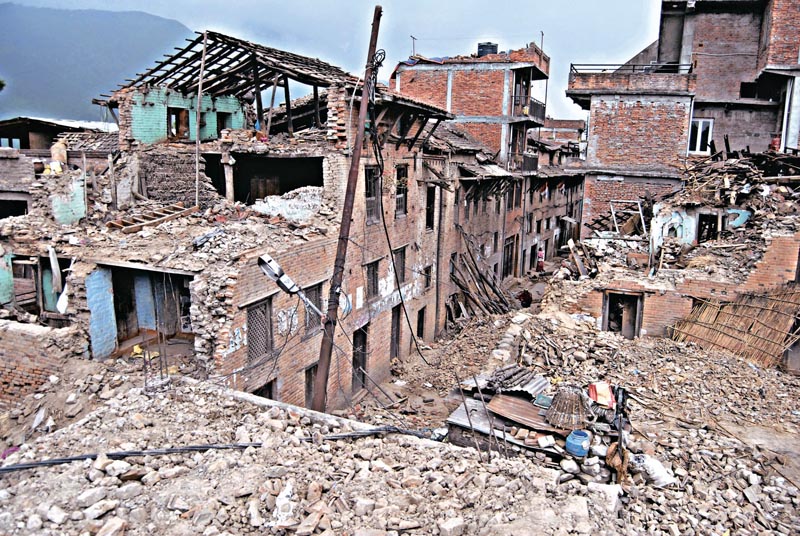Celebrating rehabilitation
Conservation work will require master crafts-persons
According to the Nepali Calendar (Bikram Sambat), the Great Nepal Bihar Earthquake of 8.4 magnitude struck on Magh 2, 1990, exactly 82 years ago. The day does not always coincide with the western or Gregorian calendar, for it occurred on January 15, 1934. Today is nevertheless Bhukumpa Diwas or Earthquake Day, which has been the day to commemorate the destruction caused by the great earthquake, but also to contemplate on the required safety from earthquakes. A series of events have been organised, mostly to kick-start reconstruction projects but also to highlight the overdue need for the country to focus on rehabilitation. The April 25, 2015 earthquake of 7.6 magnitude followed by hundreds of aftershocks has given Earthquake Day a special meaning this year. The renewed conviction to resilience might however need a new day for commemoration, that of Baisakh 12. In a country where we celebrate six New Years and three Democracy Days, we could surely handle two Earthquake Days.
Commemorating and celebrating helps, however this must be backed by action. The time has however passed for blind action that followed the earthquake in response to the immediately need to save lives. Rehabilitation is a long and tedious process of healing. Shelter must be given the highest priority in the rehabilitation process to ensure that the basic requirements for survival are met. As it snows in the mountainous areas of the country, those living in the devastated villages are having a difficult time surviving. Sustainability must however be considered. This requires preparation and contemplation that will allow for the most appropriate interventions to be determined.
The rehabilitation process must consist of three steps, each given equal importance. The first step consists of documentation, assessment and research on the damaged site or building. A clear understanding is required of the change over time as well as the impact of the recent earthquake. Only then should the second step
of detail design and specific interventions be prepared along with the required documents and permissions. For historic settlements and monuments, this would be based on the Conservation Guidelines 2072, which allows for monuments to be rebuilt as they were previous to the earthquake without additional permission. However, any changes would require acceptable justification. The third step deals with implementation which must be
carried out as per the finalised design and ensuring quality. Conservation work is however still a difficult task to carry out when the typical government construction system caters only to engineered structures.
The principles of conservation have not managed to be integrated into government standard procedures that
are defined by the Public Procurement Act. Everyone knows that the tendering procedure as defined by government
legislation and interpreted into practice does not allow for quality work and is especially not applicable for the complexity of conservation work. Only prequalified contractors who have experience in conservation work should be allowed to work on the monuments. Conservation work will require master crafts-persons to be supported and paid appropriate remuneration to ensure the highest of quality. These are issues that must be resolved through the support of the newly created National Reconstruction Authority.
The rehabilitation planning will need to consider solutions that take into account the possibility of a large earthquake striking anytime over the next hundred years. It is not sufficient to rebuild considering the seismic performance of a structure over the next few decades. It is only if the building is regularly monitored and maintained and when necessary it is possible to replace deteriorated structural components that the building will last till the next earthquake and possibly beyond. This principle is relevant not only for the monuments but also for the hundreds of thousands of shelters that are going to be built throughout the devastated districts of Nepal.
(The author is an architect and can be contacted through paharnepal@hotmail.com)






